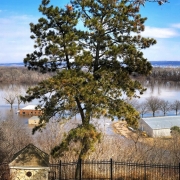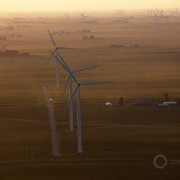Snowfall in Hindu Kush Himalaya In Steep Decline

Zara Gounden, Circle of Blue – August 2
In response to critically low snow cover in the Hindu Kush Himalaya region, and the potential for serious water shortages in downstream communities, experts from the International Centre for Integrated Mountain Development (ICIMOD) have called for immediate action in their annual Snow Update Report.
“We encourage relevant agencies to take proactive measures to address possible drought situations, update plans to accommodate water stress, and to notify communities of the risks,” said Miriam Jackson, ICIMOD’s senior specialist, in a statement. “Beyond that, it’s clear that governments and people in this region need urgent support to help them adapt to changes in snow patterns that carbon emissions have already locked in. G20 countries need to cut emissions faster than ever before to prevent even more changes that will prove disastrous to major population centers and industries that rely on snow-melt in the mountains.”
The towering snow peaks of the Hindu Kush span approximately 4.2 million square kilometers and 800 kilometers across Afghanistan, northern Pakistan, and Tajikistan. The region’s normally heavy snowfall and lingering snow cover serve as a critical water source for several major rivers.
The report, published on June 14, 2024, highlights that snowmelt accounts for about 23 percent of the total water flow in 12 major river basins originating in the Hindu Kush Karakoram Himalayas region. This snowmelt contributes 74 percent of the river flow to the Amu Darya, 77 percent to the Helmand, and 40 percent to the Indus.
The report indicates that snow levels are about 20 percent below average across the region this year, with especially steep declines in the west, where snow plays the most significant role in the water supply.
Lower snow accumulation and fluctuating snow levels significantly increase the risk of water shortages, especially this year. Experts from ICIMOD are urging water management officials to implement drought management strategies and prepare emergency water supplies in advance.
The effects of declining snow are being experienced worldwide. Snow cover on glaciers increases their reflectivity, which reduces heat absorption and prevents melting. It also acts as insulation, protecting glacier ice from direct solar radiation and warm air. This in turn can lead to devastating consequences such as rising sea levels, and disrupted water supplies for millions of people.
Other major ice formations are experiencing similar decline, illustrating the profound consequence of climate change on the planet’s great ice fields and water sources. The Quelccaya Ice Cap in Peru, the world’s largest tropic ice cap, has significantly receded, shrinking from 58 square kilometers in 1988 to just over 40 square kilometers in 2023.
Zara is a reporting intern at Circle of Blue. She is a Davis Scholar in her third year at New York University London, majoring in Global Liberal Studies with a concentration in Politics, Rights, and Development.












Leave a Reply
Want to join the discussion?Feel free to contribute!